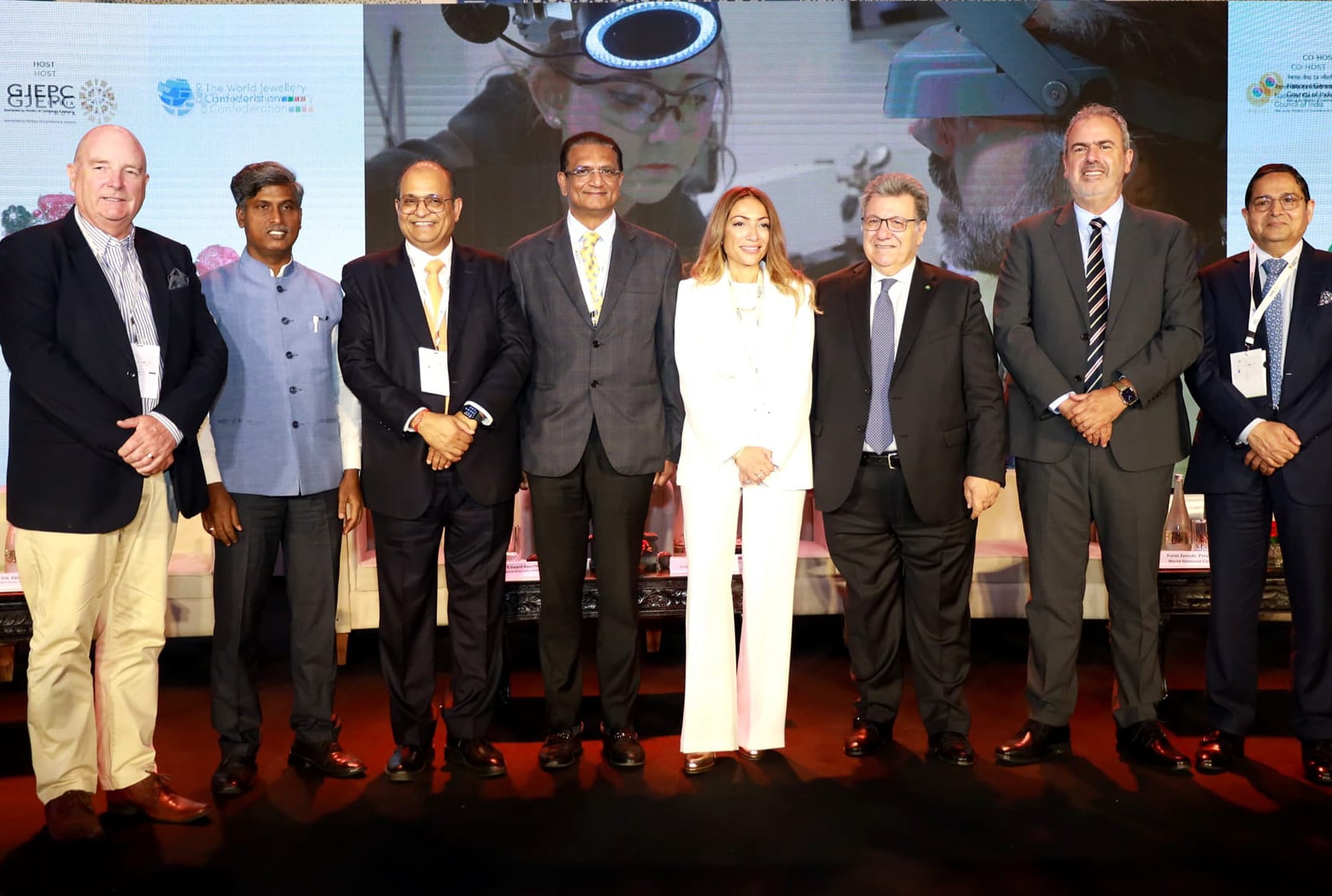
CIBJO fissa le priorità del mondo orafo: sostenibilità e formazione dei minatori
Investimenti, sostenibilità, formazione, consapevolezza: ecco le parole chiave risuonate con maggiore frequenza a Jaipur, durante le giornate dedicate al Congresso CIBJO, che raggruppa organizzazioni del mondo orafo di oltre 45 Paesi. Le commissioni hanno pubblicato i propri rapporti speciali per offrire ai membri dell’organizzazione – e al settore della gioielleria in generale – indicazioni chiare e concise su come garantire l’integrità e la responsabilità delle proprie catene di fornitura.
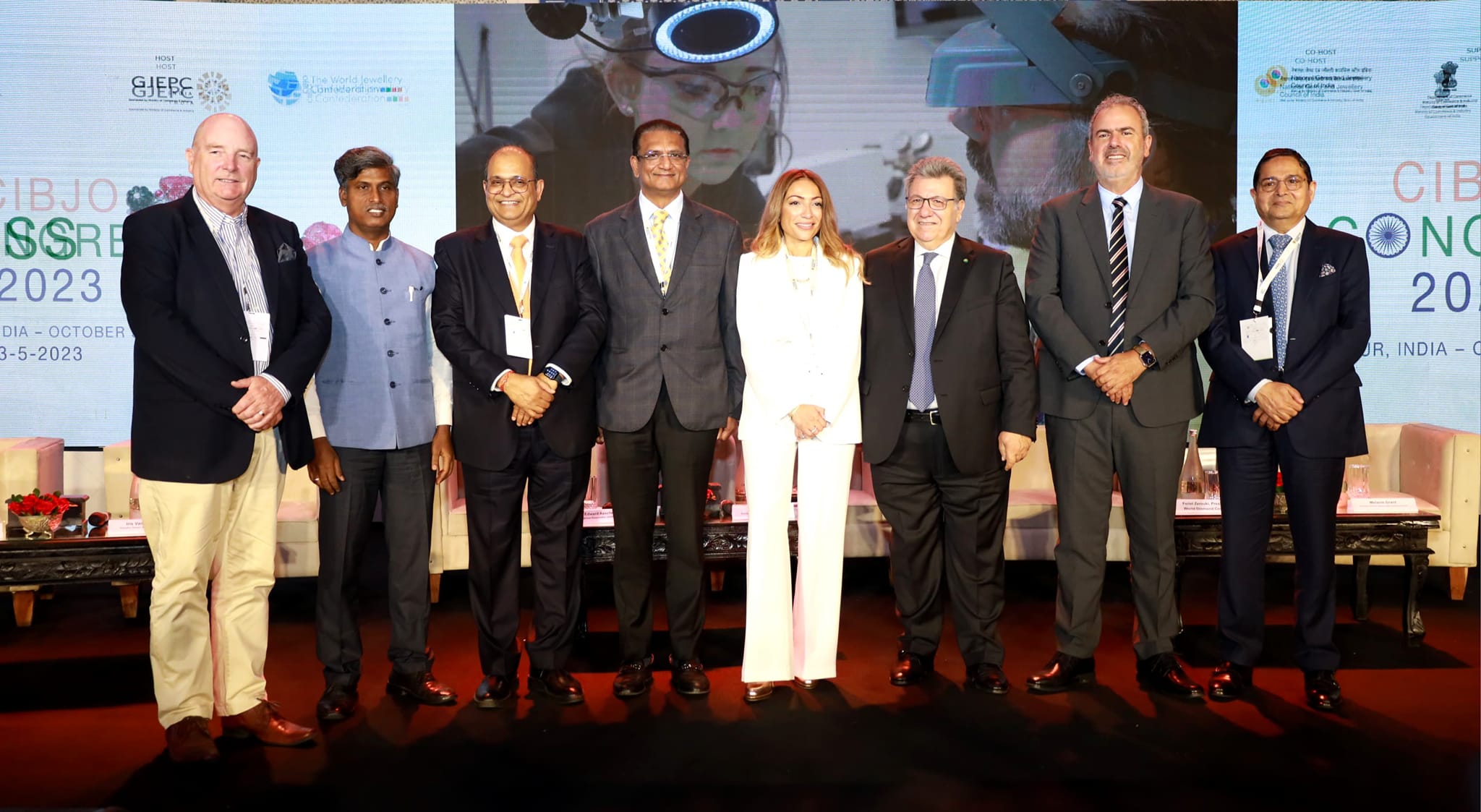
In India è stato presentato anche un progetto per passare a pratiche più sostenibili nei diamanti coltivati in laboratorio. I consulenti di ESG Environmental, Social and Governance, Jonathan Key e Helen Mitchell, con la supervisione di Wesley Hunt di De Beers, hanno delineato 14 principi generali che guideranno le aziende del settore della gioielleria di tutto il mondo a intensificare le azioni verso un futuro più sostenibile.
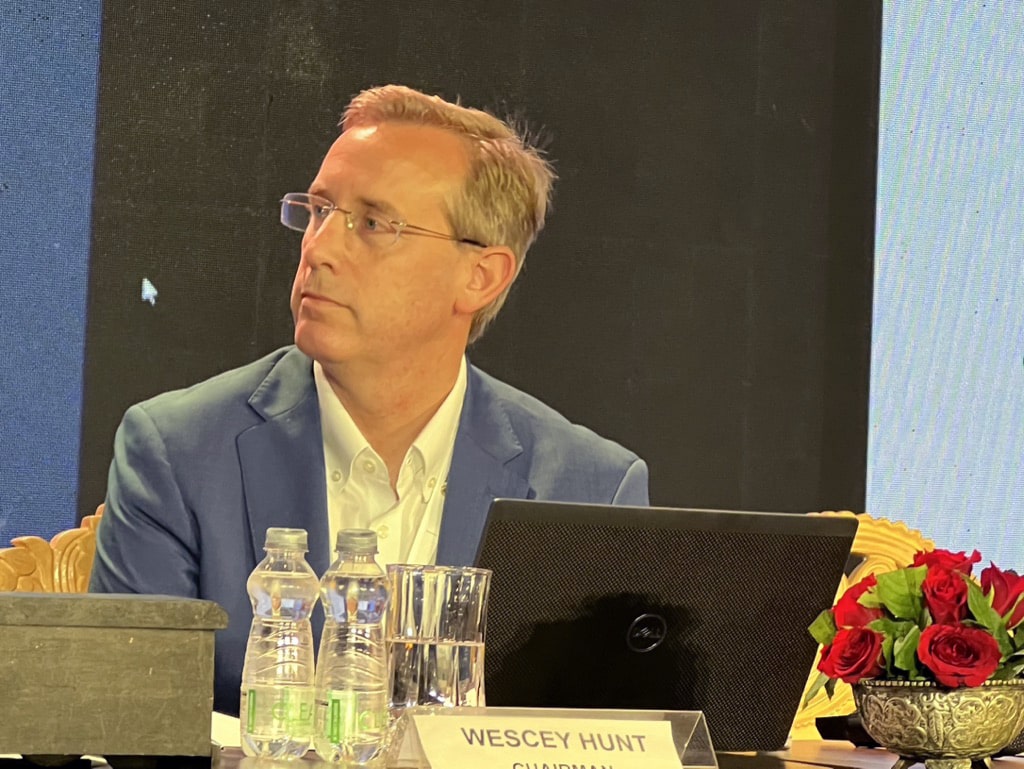
I principi sono stati suddivisi in aspetti ecologici, di responsabilità sociale e di governance. Si concentrano su alcune aree strategiche: l’azione sulle energie rinnovabili, incoraggiando le aziende produttrici di gioielli ad adottare misure quali il passaggio a un fornitore di energia rinnovabile; il monitoraggio dell’uso dell’energia e l’acquisto di attrezzature per il risparmio energetico. Fari puntati anche su salute, sicurezza e pagamento di salari equi. “Considerate i principi come una lista di controllo per passare a un’azione sostenibile e socialmente responsabile“, ha detto Jonathan Key, durante il Congresso.
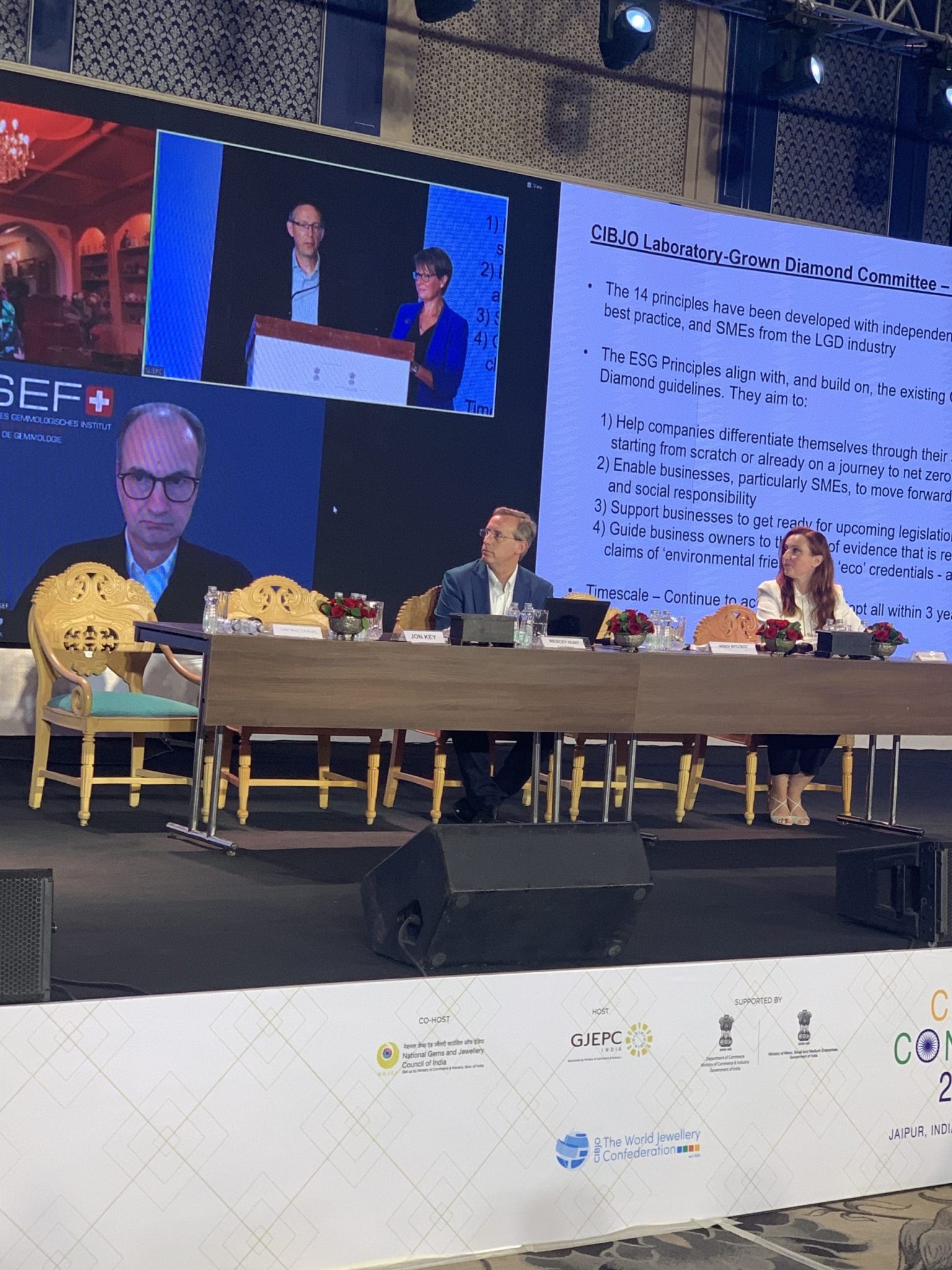
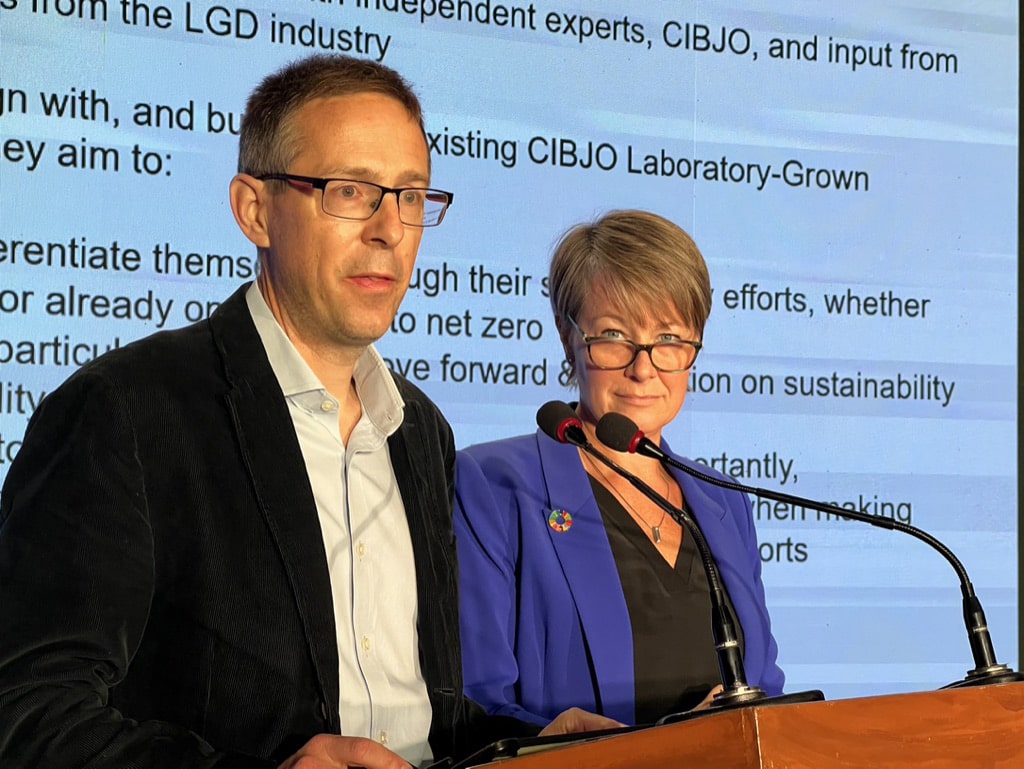
Helen Mitchell ha esortato le aziende produttrici di gioielli ad adottare misure semplici. Pensiamo al monitoraggio dell’utilizzo dell’acqua. “L’anno scorso ho lavorato con un’azienda manifatturiera che ha risparmiato il 20% dei fondi spesi per l’acqua – ha detto – Ho anche lavorato con un’azienda che ha eliminato tutta la plastica dagli imballaggi“.
Sono intervenuti anche Joanna Park-Tonks, che dirige l’International Grown Diamond Association (IGDA), e Andrey Zharkov, fondatore di Ultra C, un’azienda di gioielli con diamanti coltivati in laboratorio e membro del comitato direttivo della CIBJO. “Il progetto dedicato alle pratiche più sostenibili nel settore dei diamanti coltivati è il mezzo per creare un futuro migliore”, hanno commentato. Gaetano Cavalieri, Presidente della CIBJO, ha aggiunto: “Bisogna capire che se si rispettano questi principi, si guadagnano più soldi. È necessario rispettare le regole del business. Tra queste regole c’è la trasparenza“.
Non solo pratiche sostenibili ma anche formazione e istruzione come strumenti fondamentali per aiutare gli scavatori artigianali di pietre preziose a raggiungere migliori condizioni di vita. Il primo passo è sempre la conoscenza. In che modo è possibile fare passi avanti in questo ambito? Le associazioni industriali devono investire di più nell’istruzione e nella formazione degli scavatori. Si stima che circa 20 milioni di minatori artigianali estraggano gemme colorate in tutto il mondo e che rappresentino, dunque, circa l’80% della produzione totale.
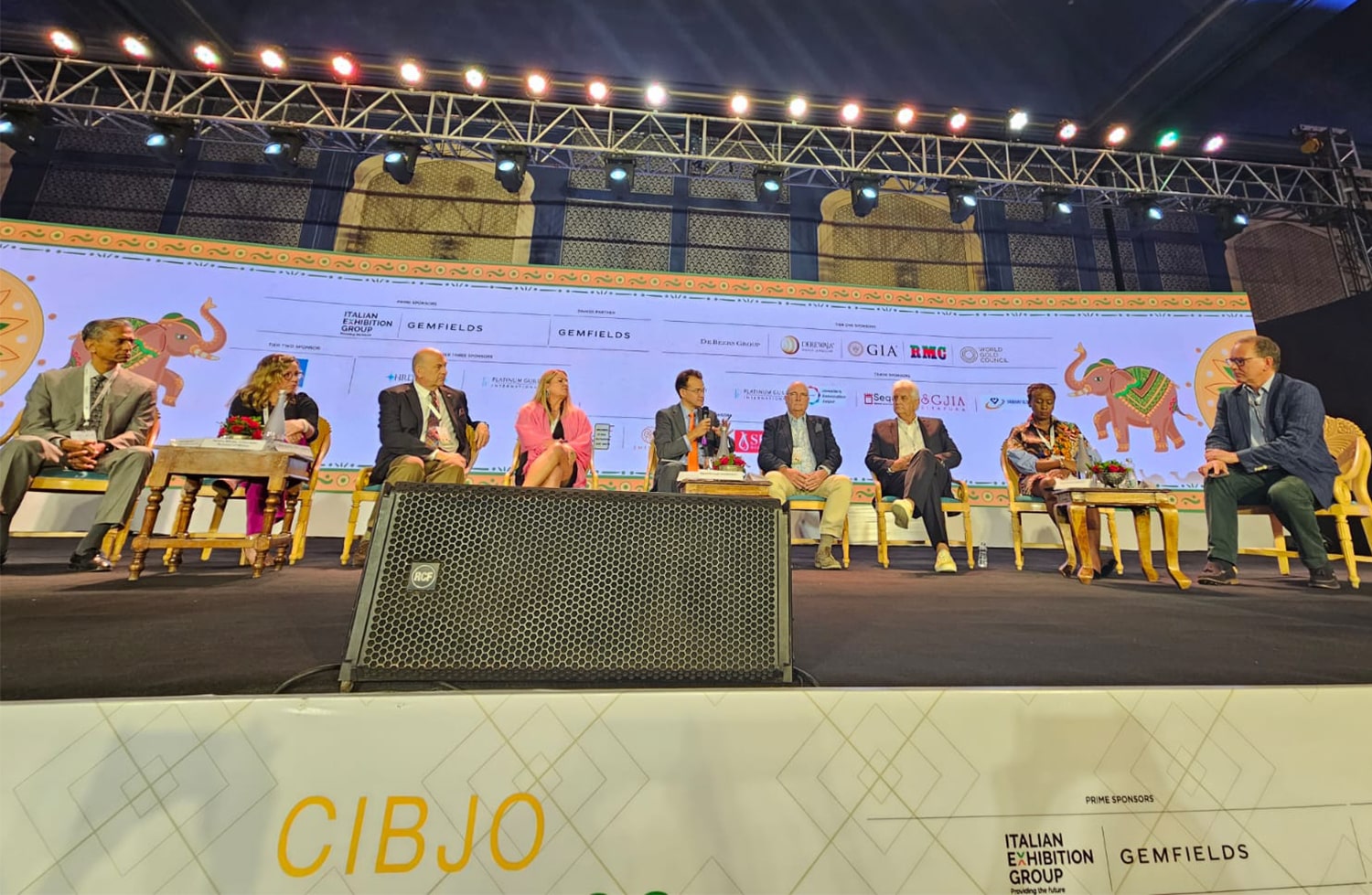
Nelle aree minerarie impoverite sono necessari investimenti in progetti di valorizzazione, affinché gli scavatori dispongano di infrastrutture necessarie. Inoltre non va mai trascurata la promozione dell’uguaglianza di genere in tutte le comunità minerarie. Jenna White, ricercatrice della Colorado School of Mines, ha portato la propria testimonianza: ha vissuto in una comunità mineraria del Kenya. Longo Mulaisho-Zinsner founder della Jewellery and Gemstone Association of Africa (JGAA), ha parlato delle difficoltà dei gioiellieri dello Zambia a procurarsi gli strumenti per il loro lavoro e delle loro difficoltà a procurarsi le materie prime delle gemme colorate in un contesto di prezzi in aumento.
Pure Kim Collins, presidente dell’dell’American Gem Trade Association (AGTA), ha parlato di bisogno urgente di raggiungere l’uguaglianza di genere lungo la filiera delle gemme colorate. Se c’è, inoltre, frammentazione, si fa fatica ad implementare infrastrutture: lo hanno sottolineato John Ford, CEO dell’American Gem Trade Association (AGTA) e Douglas Hucker, CEO dell’International Colored Gemstone Association (ICA). Gilbertson ha anche parlato di sperequazione tra produttività dei lavoratori e salari percepiti: le entrate annuali dichiarate ufficialmente dal Madagascar per l’esportazione di gemme colorate sono 15 milioni di dollari ma i minatori dei Paesi d’origine dovrebbero ricevere una quota proporzionale al reddito che stanno generando. Infine una testimonianza di Sunil Agrawal, CEO del produttore di gemme di Jaipur Vaibhav Global Ltd. Agrawal ha parlato delle buone pratiche adottate dalla sua azienda per migliorare le condizioni di lavoro lungo la catena di approvvigionamento delle gemme colorate.
The impact of virtual reality on the jewellery industry: Technology Committee publishes CIBJO report
Investment, sustainability, training, awareness: these were the key words that resonated most frequently in Jaipur during the days of the CIBJO Congress, which brings together jewellery organisations from over 45 countries. The committees published their special reports to offer members of the organisation – and the jewellery industry in general – clear and concise guidance on how to ensure the integrity and accountability of their supply chains.
A project to move towards more sustainable practices in lab-grown diamonds was also presented in India. Consultants Jonathan Key and Helen Mitchell, overseen by Wesley Hunt of De Beers, outlined 14 overarching principles that will guide jewellery companies around the world to step up actions towards a more sustainable future. The principles have been divided into ecological, social responsibility and governance aspects. They focus on a few strategic areas: action on renewable energy, encouraging jewellery companies to take measures such as switching to a renewable energy supplier; monitoring energy use and purchasing energy-saving equipment.The spotlight is also on health, safety and fair wages. “Consider the principles as a checklist for moving to sustainable and socially responsible action,” said Jonathan Key, during the Congress.
Consultant Helen Mitchell urged jewellery companies to take simple measures. Think of monitoring water usage. “Last year I worked with a manufacturing company that saved 20 per cent of the money spent on water,” she said, “I also worked with a company that eliminated all plastic from packaging.
Joanna Park-Tonks, who heads the International Grown Diamond Association (IGDA), and Andrey Zharkov, founder of Ultra C, a lab-grown diamond jewellery company and CIBJO board member, also spoke. “The project dedicated to more sustainable practices in the field of cultured diamonds is the means to create a better future,” they commented. Gaetano Cavalieri, President of CIBJO, added: “You have to understand that if you respect these principles, you make more money. It is necessary to respect the rules of business. Among these rules is transparency’.
Not only sustainable practices but also training and education as key tools to help artisanal gem diggers achieve better living conditions. The first step is always knowledge. How can progress be made in this area? Industry associations must invest more in the education and training of diggers. It is estimated that around 20 million artisanal miners mine coloured gemstones worldwide and thus account for about 80 per cent of the total production. In impoverished mining areas, investments in upgrading projects are needed so that the diggers have the necessary infrastructure. Furthermore, the promotion of gender equality in all mining communities should never be neglected. Jenna White, researcher at the Colorado School of Mines, brought her own testimony: she lived in a mining community in Kenya. Longo Mulaisho-Zinsner (JGAA), spoke about the difficulties of Zambian jewellers in procuring the tools for their work and their difficulties in obtaining the raw materials of coloured gemstones in a context of rising prices.
Kim Collins, president of AGTA, also spoke of the urgent need to achieve gender equality along the coloured gemstone supply chain. Moreover, if there is fragmentation, it is difficult to implement infrastructure: this was emphasised by John Ford, CEO of the American Gem Trade Association (AGTA) and Douglas Hucker, CEO of the International Colored Gemstone Association (ICA). Gilbertson also spoke of the inequality between workers’ productivity and wages received: Madagascar’s officially declared annual revenue from the export of coloured gemstones is $15 million, but miners in the countries of origin should receive a share proportional to the income they are generating. Finally, a testimony from Sunil Agrawal, CEO of Jaipur-based gem producer Vaibhav Global Ltd. Agrawal spoke about the good practices adopted by his company to improve working conditions along the supply chain of coloured gems.


POST COMMENT
Devi essere connesso per inviare un commento.